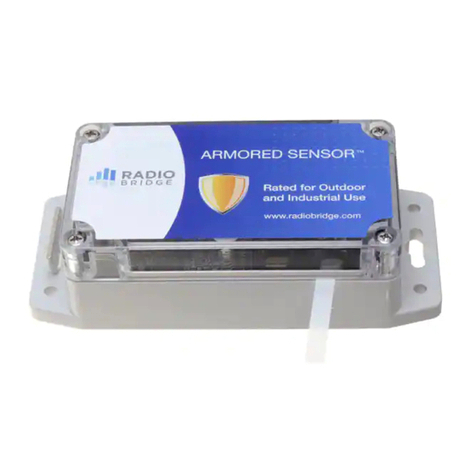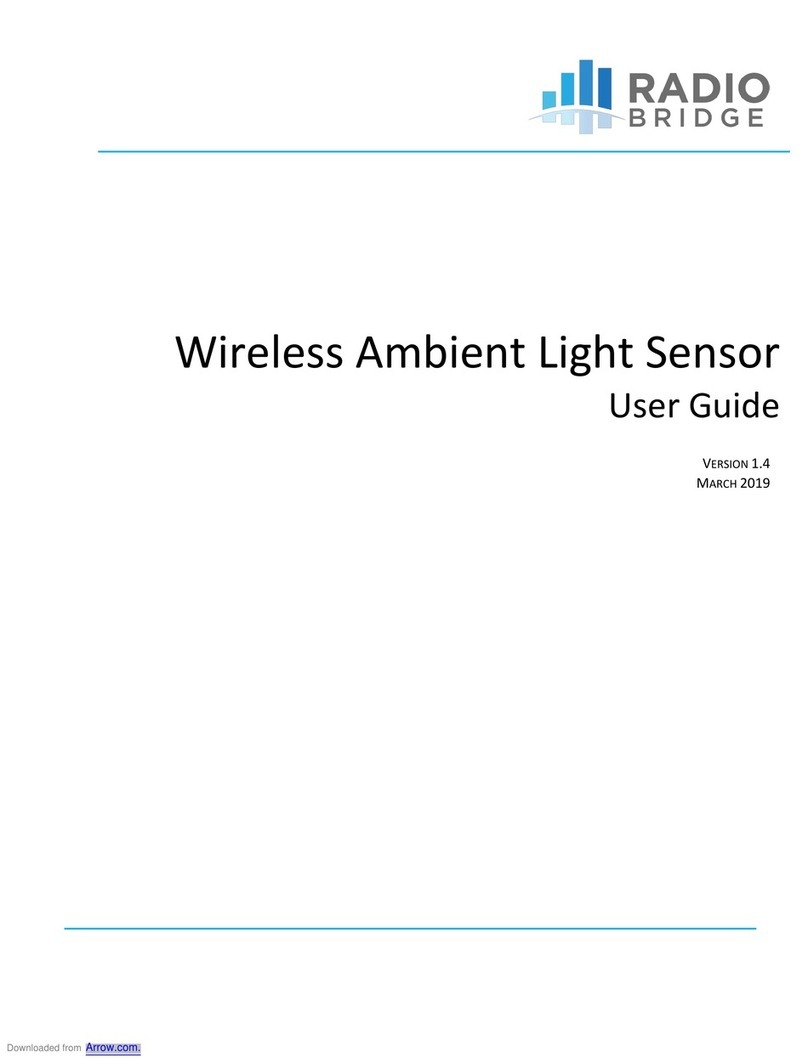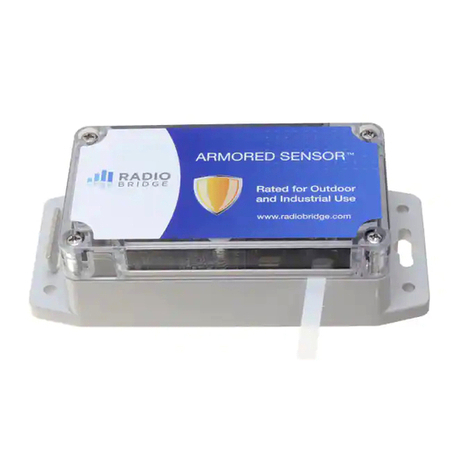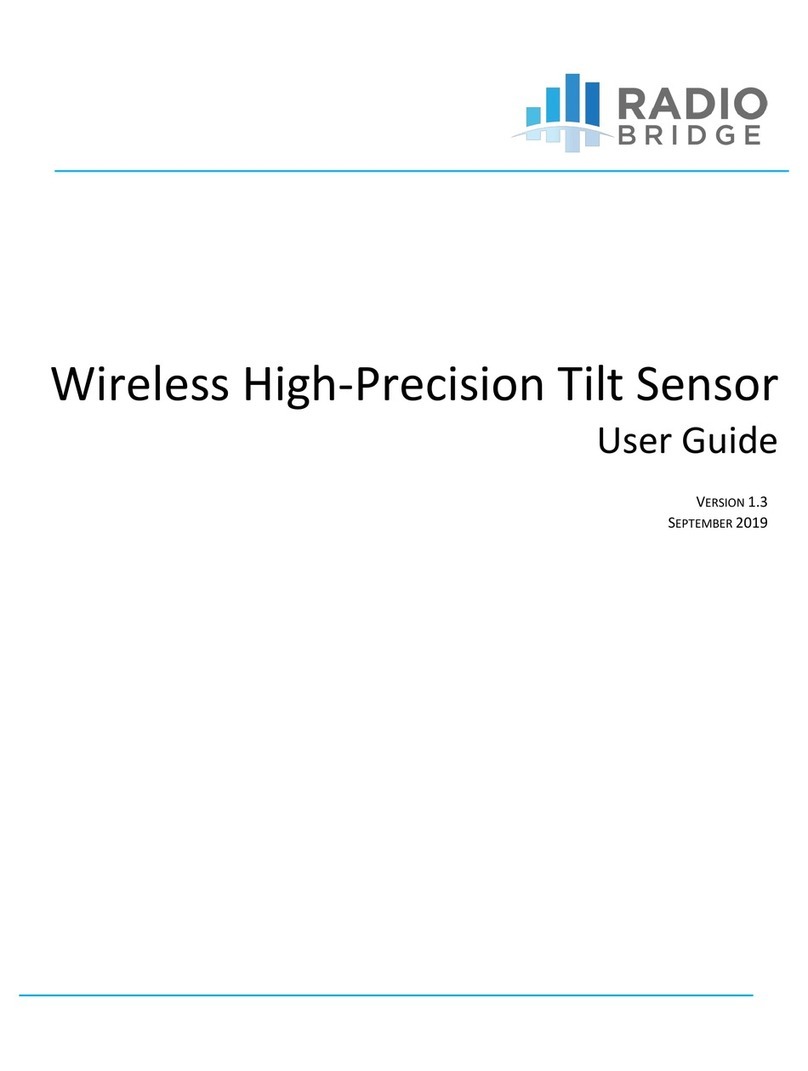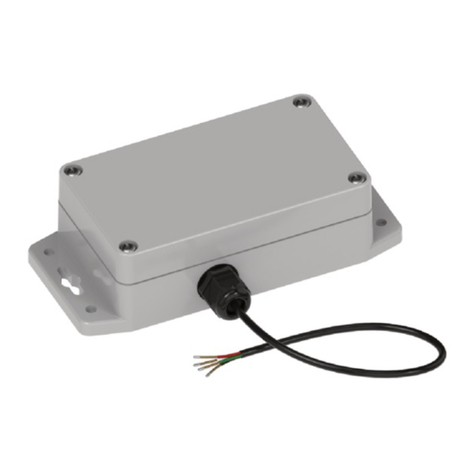WIRELESS WATER SENSOR
COPYRIGHT ©2018, RADIO BRIDGE INC.WIRELESS WATER SENSOR PAGE 1OF 10
TABLE OF CONTENTS
1. QUICK START ............................................................................................................................ 2
2. OVERVIEW................................................................................................................................ 2
2.1. Sensor Overview ........................................................................................................................2
2.2. Revision History .........................................................................................................................3
2.3. Document Conventions ..............................................................................................................3
2.4. Part Numbers.............................................................................................................................3
3. TECHNICAL SPECIFICATIONS..................................................................................................... 4
3.1. Absolute Maximum Ratings........................................................................................................4
4. BATTERY LIFE............................................................................................................................ 4
5. TEST MESSAGES........................................................................................................................ 5
6. MESSAGE PROTOCOL ............................................................................................................... 5
6.1. Common Messages.....................................................................................................................6
6.2. Uplink Messages ........................................................................................................................7
6.3. Downlink Messages....................................................................................................................8
7. MECHANICAL DRAWINGS......................................................................................................... 9
8. REGULATORY.......................................................................................................................... 10
9. CUSTOMER SUPPORT ............................................................................................................. 10
10. DISCLAIMERS....................................................................................................................... 10
11. TRADEMARKS AND COPYRIGHT........................................................................................... 10
